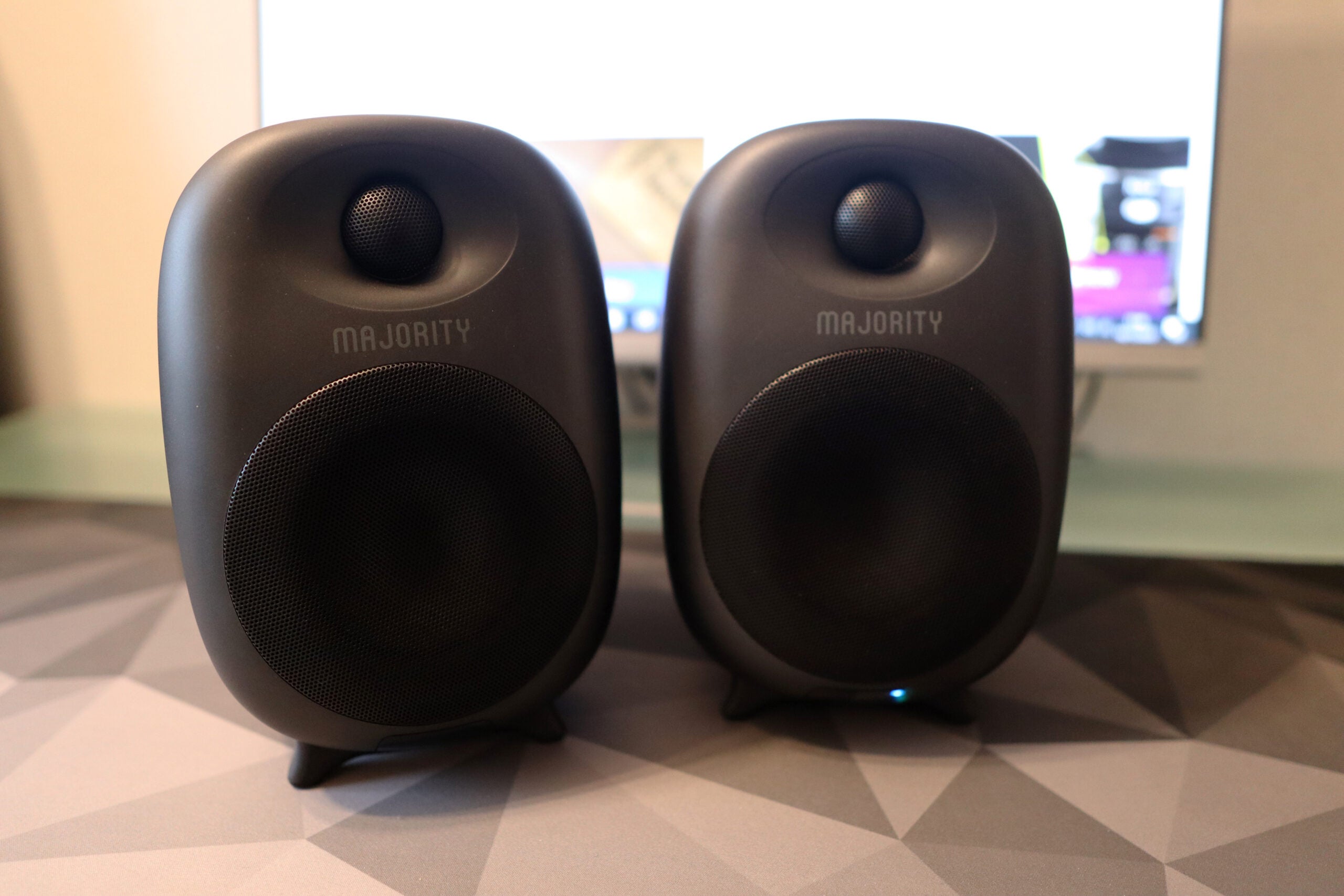Amazon Echo (4th Generation) Review
Better looking with more powerful audio
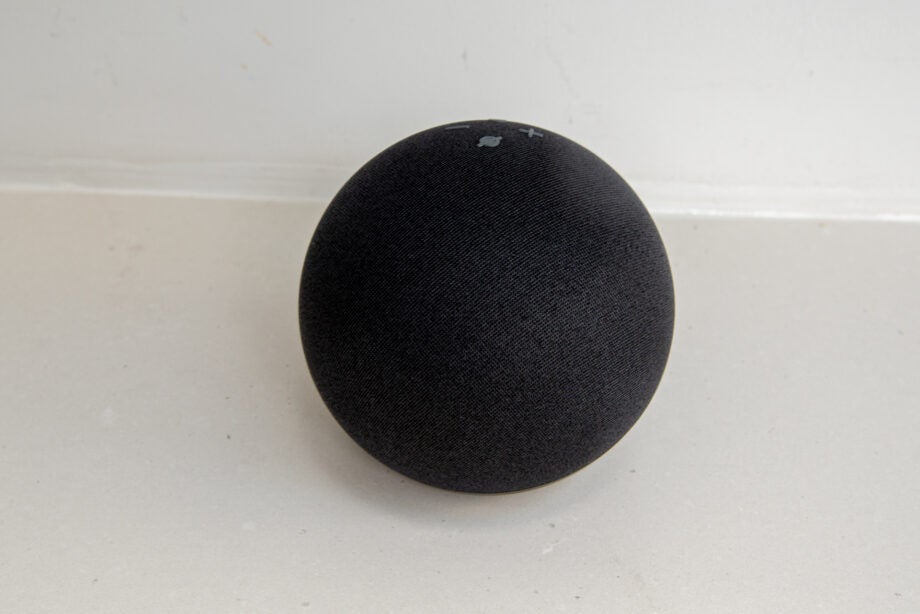

Verdict
Although the same price as the old version, the Amazon Echo (4th Generation) gives you more features and a better design. This model has upgraded audio, so that you can happily listen to music without wishing you had a separate speaker. There’s also a built-in Zigbee hub, which may be of limited to use to most people but it can be a handy add-on and means that you no longer have to pay the £50 premium for the Echo Plus. Pound-for-pound, then, this is the best smart speaker available today.
Pros
- Improved sound
- Same price as the previous model
- Zigbee hub
- Looks fantastic
Cons
- Zigbee hub not compatible with all devices
Availability
- UKRRP: £89.99
Introduction
The Amazon Echo (4th Generation) isn’t just an iterative update on the last generation: it grabs the features of the Echo Plus, boosts audio quality and packages everything into a neat, new design.
Overall, pound for pound, it’s the best smart speaker that you can get.
Design
- New spherical design looks amazing
- Downward-facing light ring is less distracting than with the older models
- New controls are easier to reach
This year, Amazon has gone spherical for its products, and the Echo (4th Generation) is the biggest of the lot: it looks a little like a cannonball or shot put.
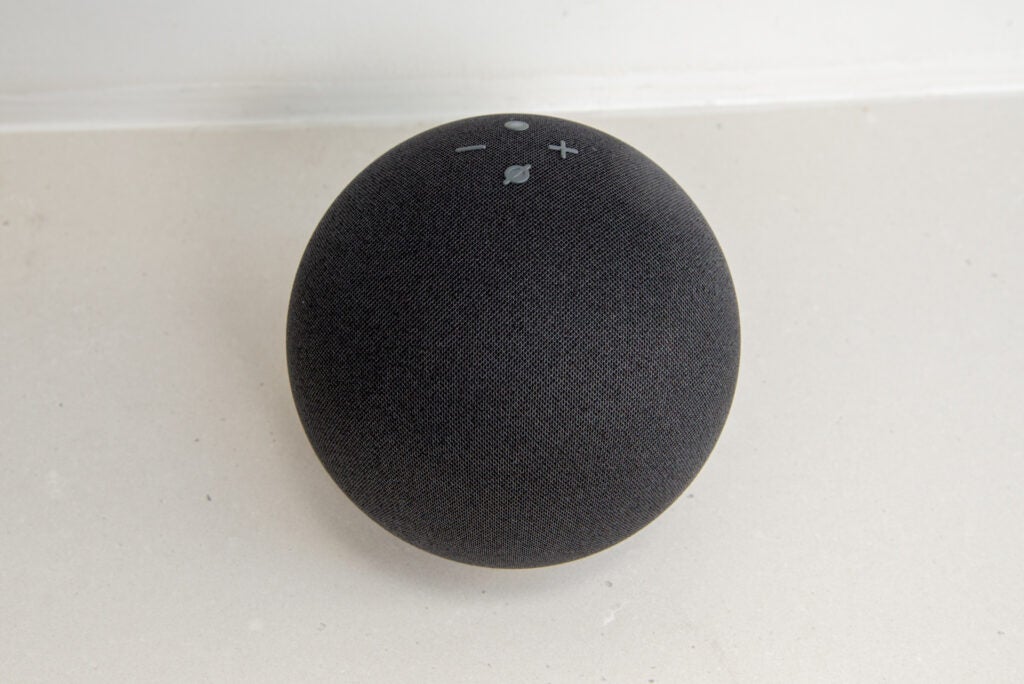
Measuring 144 x 144 x 133mm this new speaker is a bit squatter but wider than the previous Echo (3rd Generation). It’s a big improvement. While last year’s model still looked a bit like a tech product, the 4th Generation speaker feels like it’s been designed to blend in with your home. It’s available in three colours (Charcoal, Glacier White and Twilight Blue), and is made from mostly recycled materials, too.
While you still get the same basic physical controls (Volume, Action and Mute), the new buttons blend into the design and are raised with individual shapes, so they’re easier to reach for.
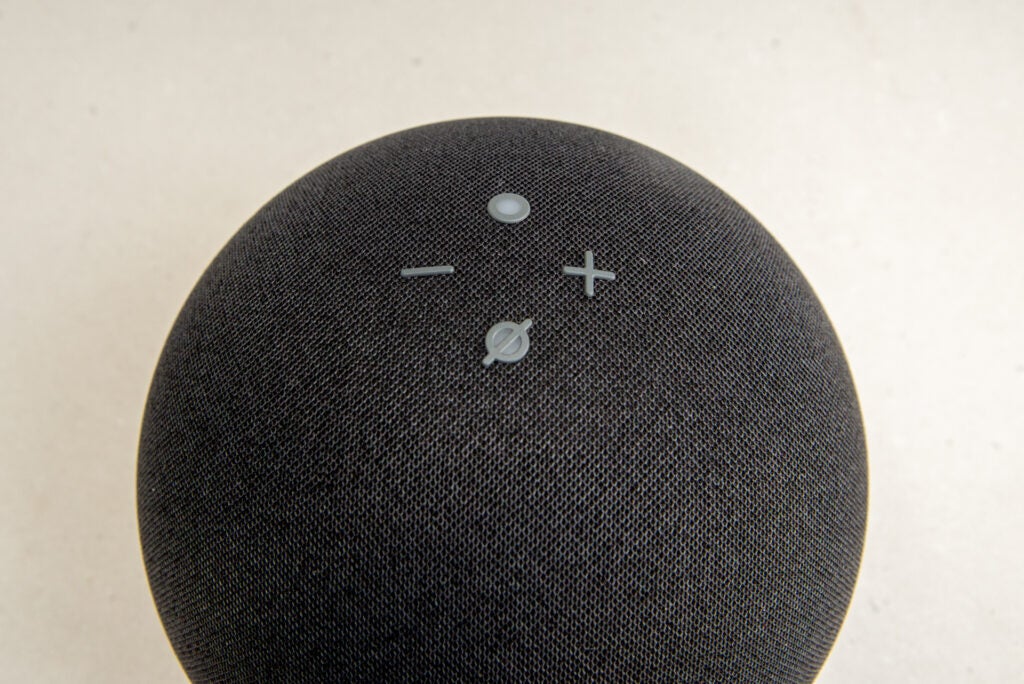
Amazon has moved the status ring light to the bottom of the speaker. This still gets you attention for notifications, but the light is less intrusive than on older speakers where it would shine up and out into a room. It’s also a useful light, filling up as you turn the volume up.
Turn the Echo around, and you’ll find familiar ports: a power input and a 3.5mm audio output. Really, if you’re going to use the audio output, you’re spending far too much money on this model and should buy a cheaper product instead.
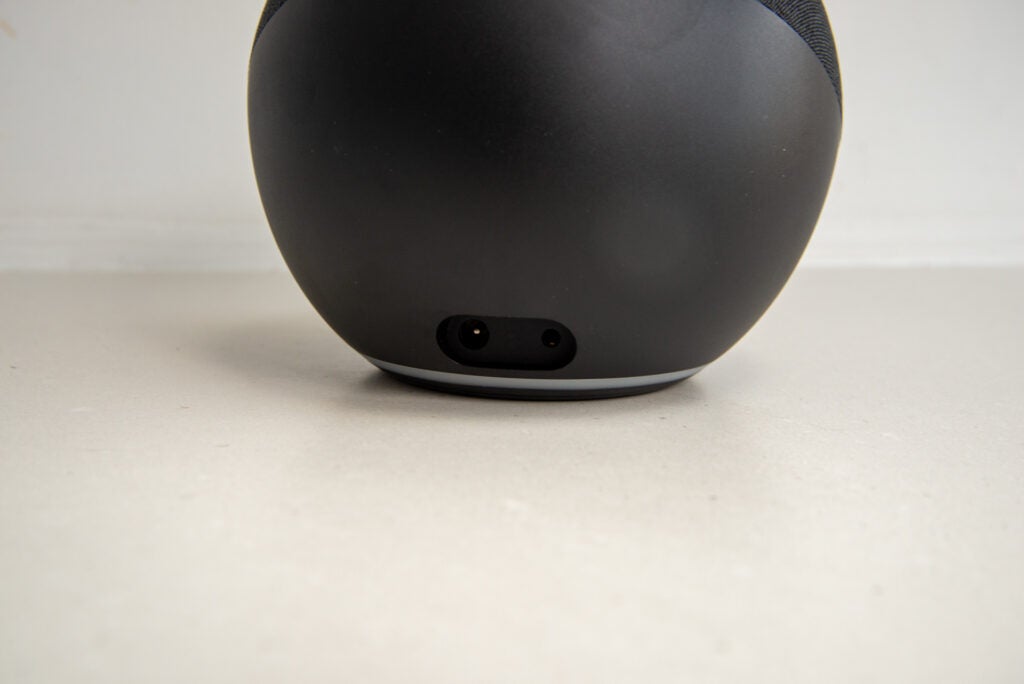
Underneath, there’s a screw mount, which is compatible with Amazon’s brand-new wall mount, although you’ll find plenty of third-party models that are compatible with it, too.

Features
- Zigbee hub gives you direct control over smart devices
- Powerful routines are available to automate your home and life
- Full power of what Alexa offers
The big change here is that the Echo now has the Zigbee hub that the old Echo Plus used to have. Given that the Echo Plus cost £50 more than the standard Echo, you’re getting a lot of value here. And, it means that you don’t have to choose if you want the Zigbee version or not, so you can start without using this feature and add it later.
With the Zigbee hub, you can add devices without having to use additional hubs. So, if you’ve got a Hue bulb, you don’t have to use the Hue bridge, and the Echo should discover your devices automatically. I say should, as you may need to reset some devices to factory state to put them into pairing mode.
When a device is found, you don’t always get clever names: Amazon seems to love things such as “first bulb”. Control depends on the device that you’ve got. With a Hue bulb, for example, you can change colour and brightness (model of bulb depending), and control it with your voice.
You miss out on some features, though: you can’t use Hue scenes and you can’t pair Hue accessories, such as the Dimmer switch for manual control. And, not all third-party Zigbee devices are compatible, either, so check before you buy. It’s still the case that the Zigbee hub is more of a curiosity for most people, rather than a must-have but it’s nice to have it thrown in for free.

The Echo continues to be a massive part of the smart home, and Alexa still has the best support for smart home devices, and Alexa Routines are way ahead of those provided by the Google Assistant. As with the old Plus models, the new Echo has a temperature sensor built-in that you can use to trigger Routines.
Otherwise, it’s business as normal, and my Alexa Guide gives you the lowdown on what the voice assistant can do. The short version is that Alexa is pretty good at day-to-day requests (weather updates, appointments, general questions), although a little behind Google Assistant for traffic and for questions where Google can use its search prowess.
As with other Echo speakers, you can use the Echo to make calls and, if you have EE or Vodafone, receive calls, too.
Amazon has included its new Low Power mode here, which cuts how much energy the speaker draws while it’s idle. It’s a nice gesture but the feature won’t work if you have Spotify linked to your account, you’re using the 3.5mm audio output, or you have a notification waiting. That cuts this mode out for a fair number of people.
Sound Quality
- Two tweeters and a woofer boost sound
- You can stereo pair this model to boost sound quality
- A great mid-range speaker
Amazon has squeezed two 0.8-inch tweeters and a 3-inch woofer into this model: that’s one more tweeter than on the old Echo. There’s not quite enough space to give proper stereo separation, but you get a clearer sense of the stereo effect. Play Enough Space by the Foo Fighters and the opening guitars do swirl around.
Dual tweeters mean that there’s a bit more detail, too, with some clarity and subtlety pulled out of music. Play Johnny Cash’s version of Hurt, and you can hear his fingers slide down the strings, with the Echo able to cope with some of the rawness of that track.
There’s a bit more attack and a good level of bass, too, although the Echo can’t quite deliver the full impact of a song such as Rage Against the Machine’s Bomb Track. And, the Echo 4th Generation is better when at mid-volume levels; it won’t distort at maximum volume, but the sound gets muddier.
Latest deals
Should you buy it?
You want a more powerful audio experience Better than previous Echo speakers, this new model is a nice-sounding smart speaker that’s great for music.
You have an older Echo speaker and are happy with it Alexa works the same here as with older models, so if you’re happy with what you’ve got already and don’t need better audio, there’s no point in upgrading.
Final Thoughts
I think that the Sonos One is the better sounding smart speaker, but it costs more than twice as much. For its price, the Echo 4th Generation sounds excellent and is a great little music speaker. And, you can boost audio quality by adding an Echo Sub and another Echo speaker for an Amazon Echo Stereo Pair.
How we test
We test every wireless speaker we review thoroughly over an extended period of time. We use industry standard tests to compare features properly. We’ll always tell you what we find. We never, ever, accept money to review a product.
Find out more about how we test in our ethics policy.
FAQs
Each light ring colour means something different, from messages waiting to errors. Our explainer on the Echo light colours tells you everything.
Yes you can, you can just tell Alexa to go into pairing mode.
Yes, you can also pair the Echo with a Bluetooth speaker the other way round.
This activates Alexa without you having to speak – handy if you want to talk to Alexa if it’s having problems understanding you.


